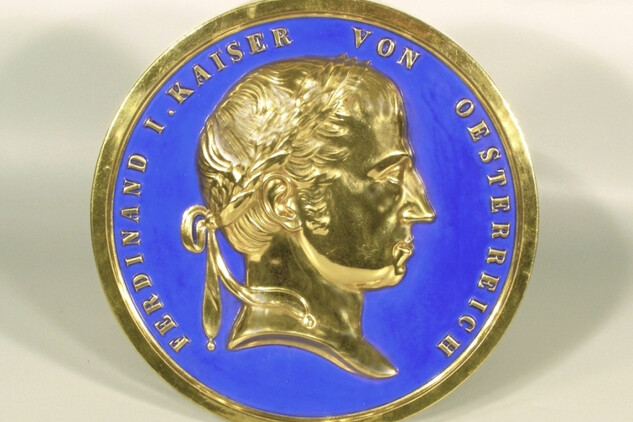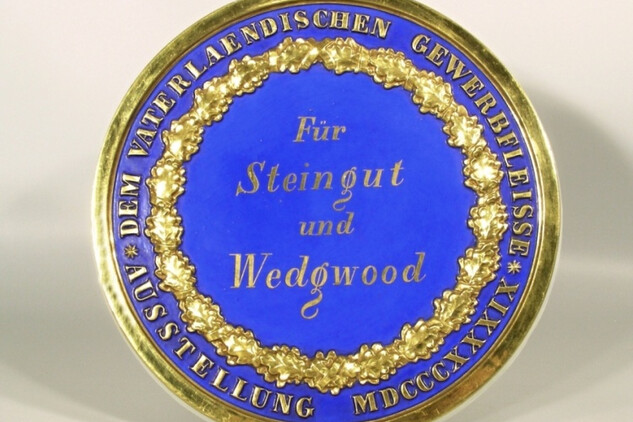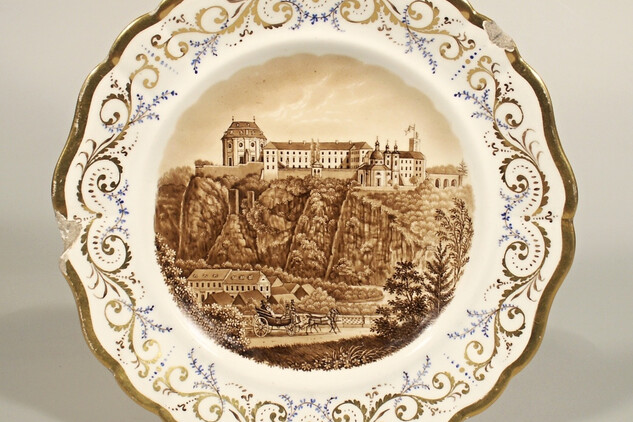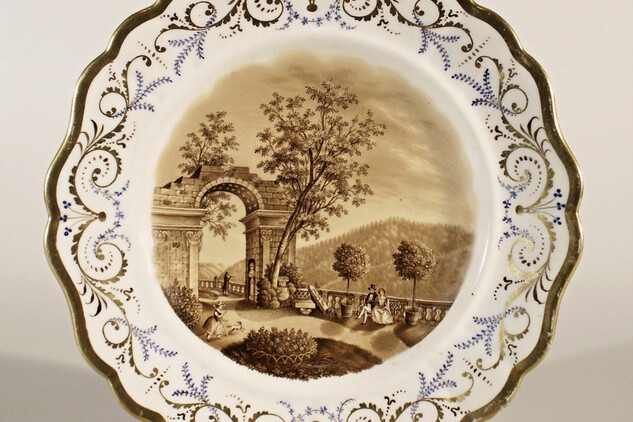EARTHENWARE FACTORY
Its history, significance and use in the interiors of the basic tour route
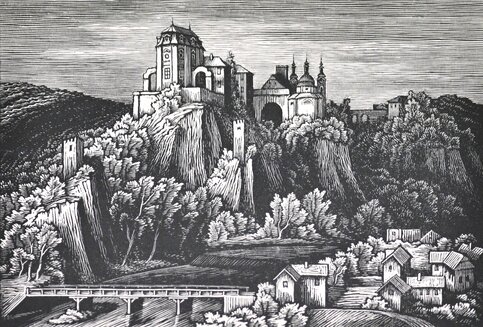
THE FOUNDING, RISE, BOOM, DECLINE, AND DOOM OF THE VRANOV EARTHENWARE FACTORY
The famous Vranov earthenware factory was founded in 1799 by Josef Weiss. In 1816, it was purchased by the owner of the Vranov estate Stanislaw Mniszek, who recruited more workers, enlarged the range or products, improved the technology, and cut costs. In 1828, he obtained the exclusive right to produce new types of Wedgwood pottery, and around 1832 introduced the cheap, attractive and fashionable printed décor.
In the 1830s and 40s, the factory flourished, turned out an extensive range of products very popular on both the local and international markets, and including dining, toilet, writing and smoking sets, as well as flower pots, vases, coffee machines and heaters. The factory's nearly 80 employees who could use a steam-powered clay mill, four furnaces and 25 potter's wheels, annually "consumed" 2,400 fathoms of wood and 1,000,000 kilos of the material, of which "7,500 units of pottery of extraordinary beauty and quality were made". In that time it reached well-markedt successes on domestic market as well as on foreign markets and it won significant recognition and awards on european and world exhibitions.
At the end of the 1840s and through the 1850s, difficulties arose in both production and marketing due in particular to the competition of the nearby factory in Kravsko, and the ever better and cheaper porcelain production elsewhere. The crisis came to a head at the close of the 1870s. The production of cheaper, non-decorative earthenware of inferior artistic quality, and earthenware made exclusively for technical purposes did not help. In the same way, exports to Turkey and Italy, and innovative marketing methods better suited to the demands of the market, failed to provide a solution. The factory was closed down in 1882.
EARTHENWARE IN THE PERIOD CONTEXT
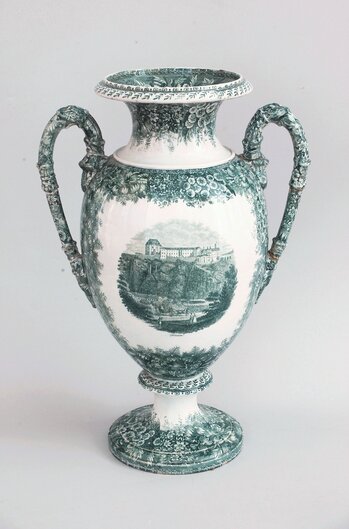 Assessing the factory's production as a whole, one admires the mastership with which the Vranov potters coped with the technological difficulties. In this respect, the original light-coloured Dürenbeck Wedgwood pottery, remarkable for the endurance and quality of the glazing and its extraordinary functionality, stands out. The earthenware with fine decorations using flower, landscape and geometrical motifs and patterns and the very demanding cut and lacework décor, also command respect. Thanks to this production, the factory ranked among the most important producers in the monarchy.
Assessing the factory's production as a whole, one admires the mastership with which the Vranov potters coped with the technological difficulties. In this respect, the original light-coloured Dürenbeck Wedgwood pottery, remarkable for the endurance and quality of the glazing and its extraordinary functionality, stands out. The earthenware with fine decorations using flower, landscape and geometrical motifs and patterns and the very demanding cut and lacework décor, also command respect. Thanks to this production, the factory ranked among the most important producers in the monarchy.
The aesthetic quality of most of the preserved items, many of which can be seen in a representative collection displayed in the interiors of Circuit 1 , is exceptional, especially the classic-styled produce of the 1830’s and 1840’s. Although the Vranov earthenware was infuenced, particularly at the beginning, by foreign examples, it gradually achieved, thanks to the local potters and painters, its own style and subsequently wielded an influence on the production of other factories. The production of the earthenware represents an important milestone in the history of Central European civilisation. It still acts as a valuable inspiration in its creative utilisation of foreign styles, as well as its specific artistic and technological development.
Vranov Earthenware in the Interiors of the Basic Tour Route
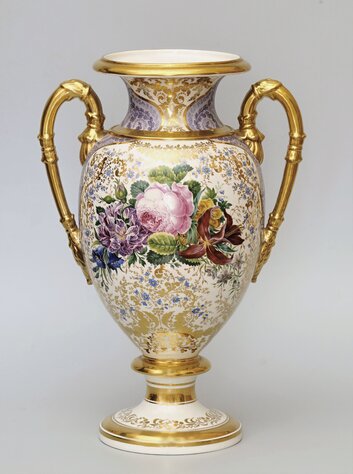 This offers a representative collection as an important attribute of the interiors. The exhibits are mostly from the planned collections created by the Mniszeks and Stadnickýs, former owners of the chateau in the 19th century. This represents the most extensive collection of authentic earthenware from the local factory, the products of which can be found in numerous collections including the Moravian Gallery in Brno, the South Moravian Museum in Znojmo and the Museum of the Decorative Arts in Prague as well as in private collections and in those of significant European cultural institutions.
This offers a representative collection as an important attribute of the interiors. The exhibits are mostly from the planned collections created by the Mniszeks and Stadnickýs, former owners of the chateau in the 19th century. This represents the most extensive collection of authentic earthenware from the local factory, the products of which can be found in numerous collections including the Moravian Gallery in Brno, the South Moravian Museum in Znojmo and the Museum of the Decorative Arts in Prague as well as in private collections and in those of significant European cultural institutions.
In the rooms on the first tour route visitors have an opportunity to see some of the oldest vessels from black, red-brown and golden Wedgwood. These include especially trays, pots, cups, inkwells, saucers, salt cellars, bowls, saucers and sugar bowls and other tableware from the first quarter of the 19th century. Also of interest is the Vranov invention of so-called Dürenbeck Wedgwood with subtle pastel colours, which in a Central European context is an exceptional phenomenon and represents an original contribution for the ceramic production of the period.
The guide highlights the various kinds of luxuriously designed decorative vases and on the methods for decorating products from dining, coffee and tea sets, as well as those for writing and toiletries. Visitors can acquaint themselves with the relief decoration, gilt and colourful painting as well as printed decoration which frequently made use of the chateau as a motif. Several of these can be seen on the photographic gallery that follows.
The products of the earthenware factory can be seen in the photographic gallery Vranov Earthenware.
